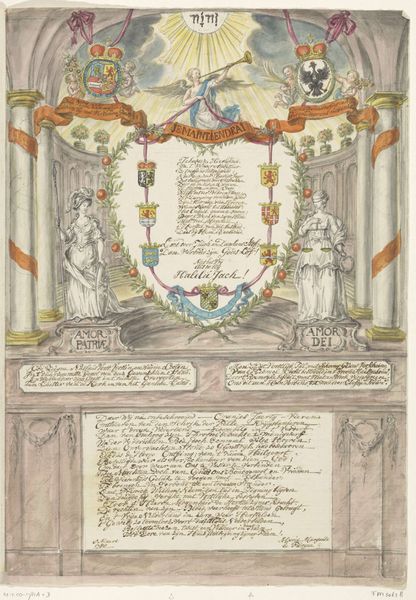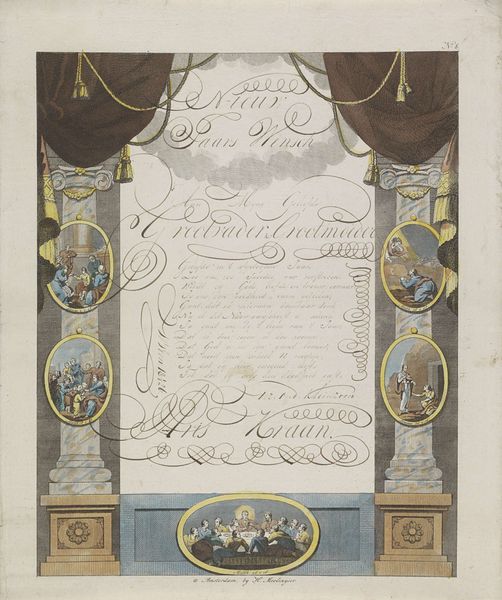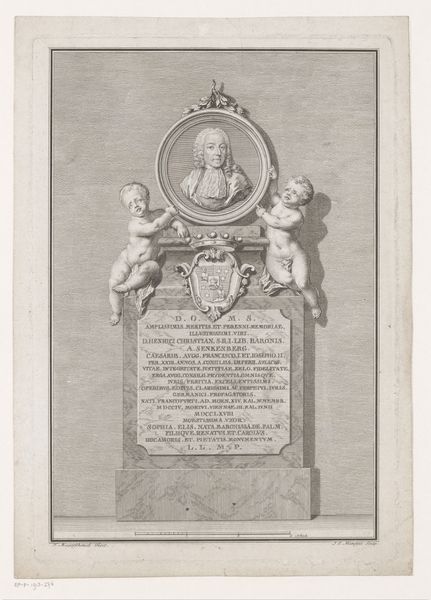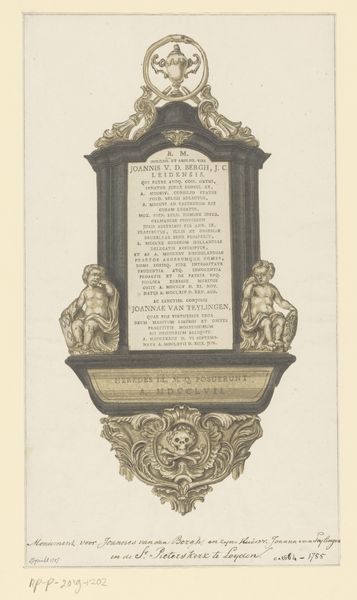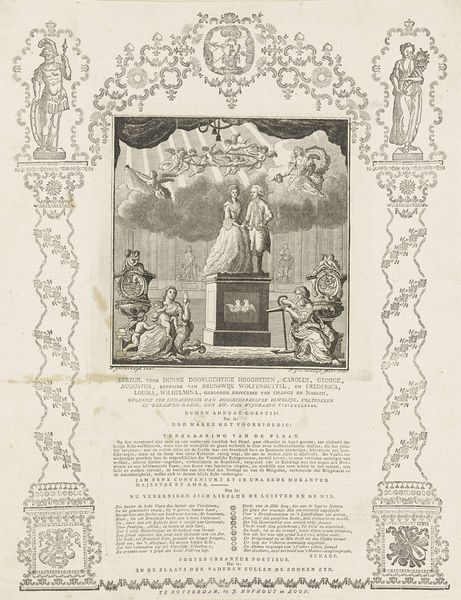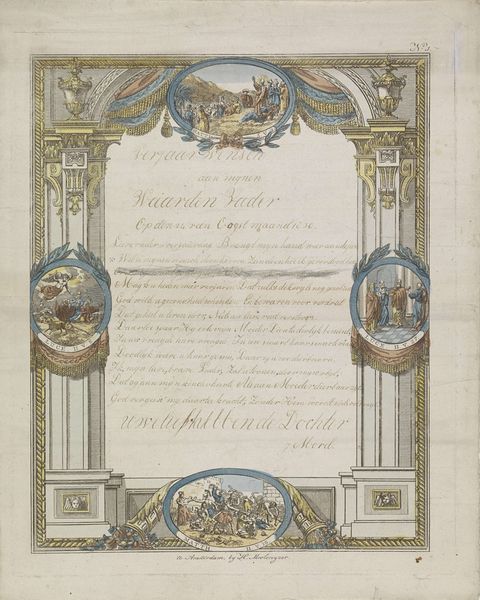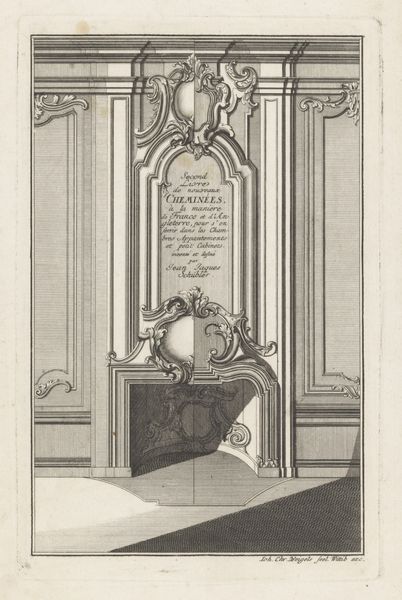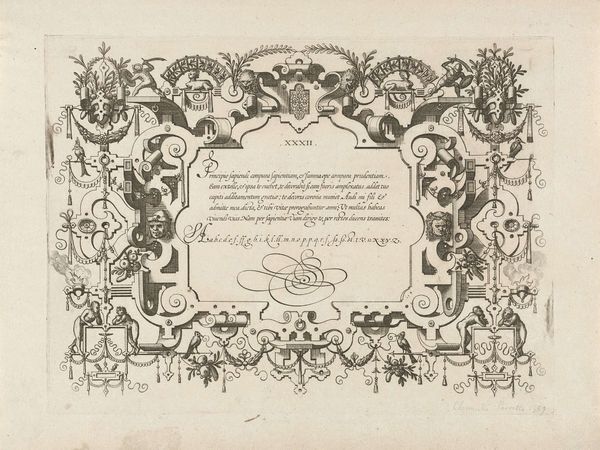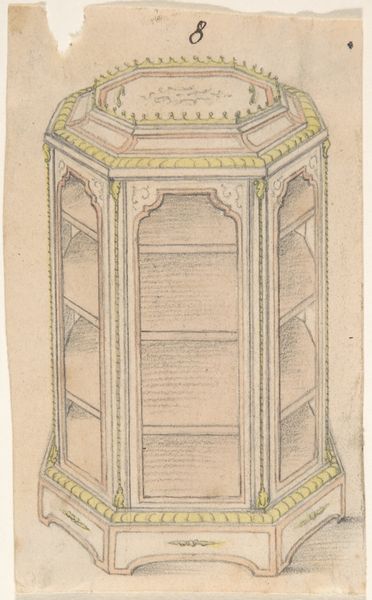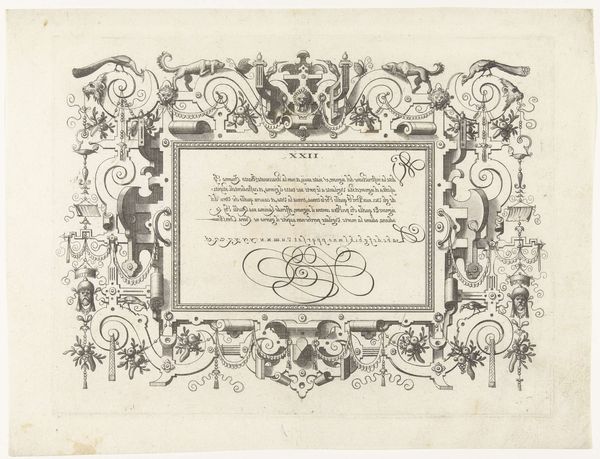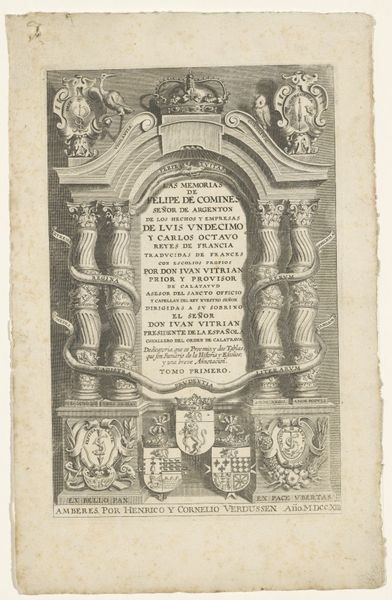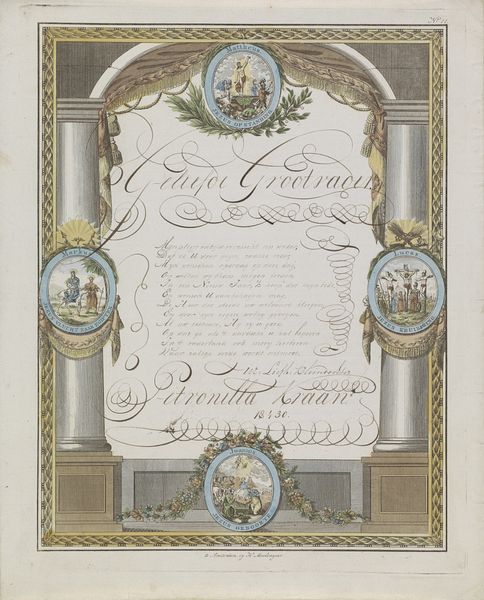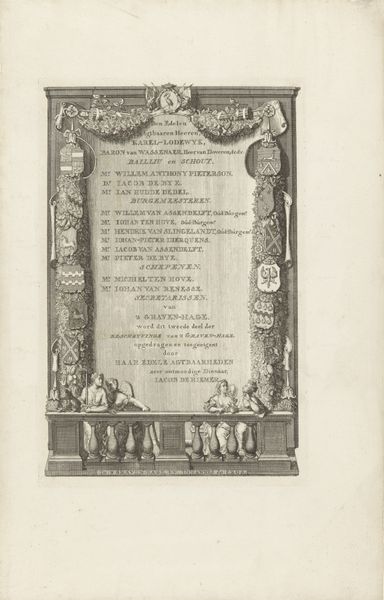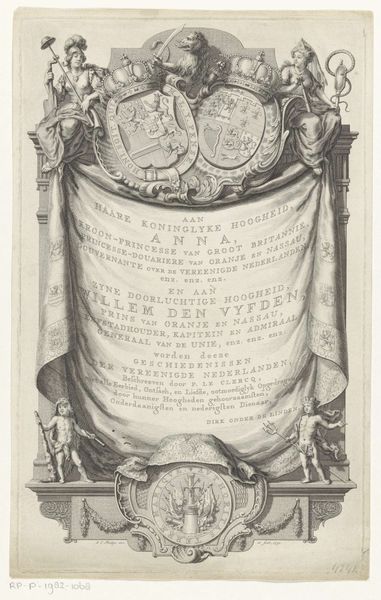
Gedicht op de vijftigste verjaardag van de equipage-meester van 's lands marine, departement Amsterdam, Joachim Pieter Asmus Possibly 1805
0:00
0:00
drawing, print, paper, ink
#
drawing
# print
#
paper
#
ink
#
coloured pencil
#
romanticism
#
history-painting
Dimensions: height 46 cm, width 37 cm
Copyright: Rijks Museum: Open Domain
Editor: So, here we have what's believed to be a print, ink and colored pencil drawing on paper, titled "Gedicht op de vijftigste verjaardag van de equipage-meester van 's lands marine, departement Amsterdam, Joachim Pieter Asmus" by H. Bout, likely from 1805. The architectural elements give it a theatrical feel, almost like a stage set. What stands out to you? Curator: The architecture itself acts as a frame, a stage for presenting memory and commemoration. Note how the drapery evokes classical stages but it also looks like it’s decaying. Observe how the text itself is framed like a memorial inscription. It recalls a tradition where personal stories were elevated through association with power structures of the day. Does this layering of symbols hint at something deeper, a tension between public persona and private remembrance perhaps? Editor: That’s interesting. The idea of the stage both celebrating and concealing a more personal story… it really shifts my perspective. It's like the formal setting both elevates and contains the individual. Curator: Exactly! Think of the Amsterdam coat-of-arms. It's not merely decorative; it signals belonging, civic pride, but also perhaps a constraint, an obligation. Consider the fading of the lines and colours, and ask yourself how we participate in a visual culture of mourning? Is it a message of hope, or an acceptance of inevitable loss? Editor: It’s both. The poem’s celebration acts almost as an antidote to loss. Looking at it again, I can now recognize that duality of celebration and mourning co-existing within the symbols. Curator: Indeed. And now imagine this piece within the context of early 19th-century Amsterdam… what might these symbols communicate to its intended audience, someone connected to the naval department? What enduring message about civic duty does it send? Editor: Wow, seeing how symbols function as triggers for understanding that time really helped me connect to this piece!
Comments
No comments
Be the first to comment and join the conversation on the ultimate creative platform.
